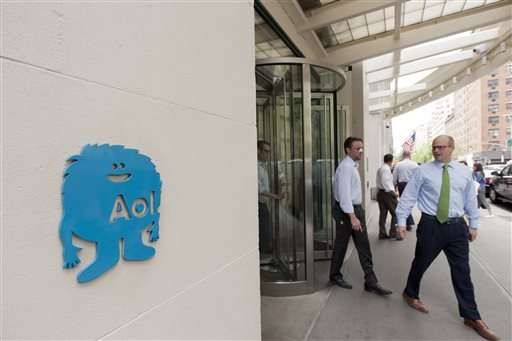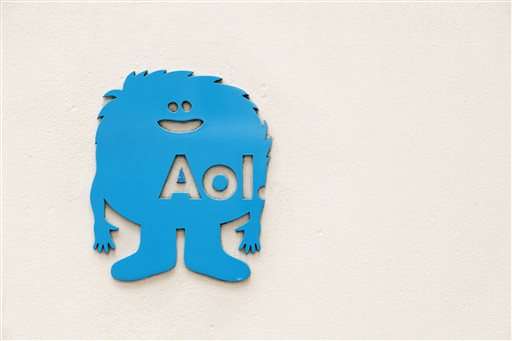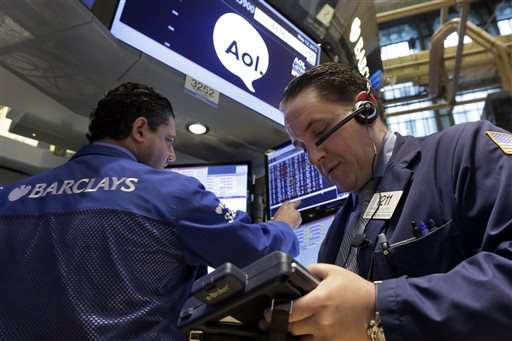Verizon buys AOL for $4.4 billion in mobile video bet (Update)

After selling millions of Americans their mobile phones, Verizon now wants to capture their eyeballs, too.
As its phone business slows down, the nation's largest wireless carrier is making a $4.4 billion bet that it can find growth in mobile video and advertising by buying AOL, one of the Internet's oldest brands, which has been through its own share of transformations since introducing much of America to the online world nearly a generation ago.
The acquisition is the latest effort by a wireless company to tap into some of the money shifting to streaming video and mobile devices.
Ken Doctor, a media analyst for consulting company Outsell, said Verizon is becoming less of a utility that merely provides access to online services and more of a player in the digital arena as it sees growth in the likes of Apple, Google and Facebook.
"They're trying to move into that league of players getting money from digital, both from consumers and advertisers," Doctor said.
For consumers, the deal could mean more advertising—and ad targeting—from Verizon. That might mean more personalized ads in online videos and AOL content that appears on Verizon handsets and in marketing messages to customers.
AT&T has taken a different tack. Last year, the company said it would buy satellite TV provider DirecTV for $48.5 billion so it could offer bundles of TV, Internet and phone services—just like cable companies. In many cases, the Internet component would be through wireless rather than fixed-wire broadband.

With the AOL acquisition, Verizon will gain access to advanced advertising technology, including the "One by AOL" platform that lets customers buy ads across platforms, including video, online and TV.
AOL reported a 7 percent boost in revenue during its first quarter, mainly on strong global advertising sales.
"AOL's focus on unifying the advertising experience across display, video, mobile and TV makes it an attractive asset because advertisers are looking for better ways to reach their audience across screens," said Lauren Fisher, analyst at eMarketer. "Coupled with Verizon's existing mobile (and streaming video) presence, the companies' combined ad offerings mean massive cross-screen reach with much richer audience data."
Verizon also gains control over significant AOL content, including The Huffington Post and TechCrunch. AOL is the nation's fourth-largest online property with about 200 million monthly consumers of its premium brands, according to its website. And AOL is the third-largest desktop video company in the U.S. by users, accounting for about 35.4 of total unique viewers of online video via desktop computer in February 2015, according to IBIS World.
AOL's own shows include a reality series of half-hour episodes called "Connected" and a two-minute daily satirical sports analysis show called "2 Point Lead."
When it comes to providing Web services, Verizon has already come under fire for inserting unique tracking codes into some of its customers' traffic. Although the trackers did not contain personal information, they could be used to gauge a customer's interests and habits and used for ad targeting. Following complaints, Verizon began letting customers withdraw from the tracking program.

Still, analysts said, the move should not be overstated since it's a relatively small part of Verizon's overall value.
According to MoffettNathanson partner Craig Moffett, the investment in AOL is "tiny." He says AOL will account for little more than 1 percent of Verizon's total value.
"It's the tip of the tip of the tail, and it is clearly not going to wag the whole dog," he said in a research note. "Verizon is still, first and foremost, a wireless phone company."
The deal marks yet another transformation for AOL, which as a powerhouse dial-up provider in the 1990s acquired Time Warner Cable in 2000 for $165 billion. The deal with Time Warner failed and came to be regarded as one of the most disastrous business combinations in history.
In 2009, AOL was spun off from Time Warner, becoming an independent, publicly traded company and since then has transformed itself into a media and ad tech company.
© 2015 The Associated Press. All rights reserved.


















